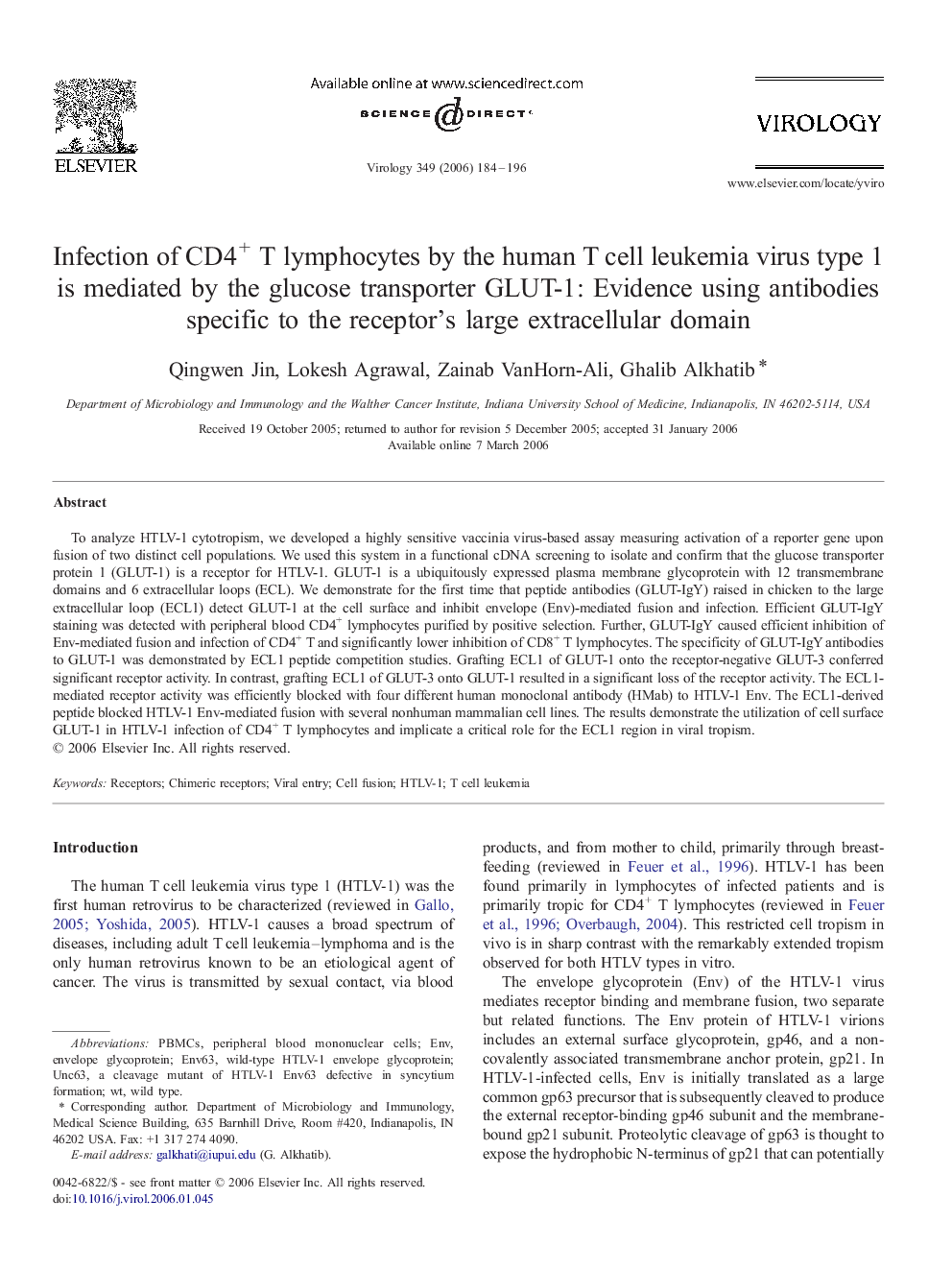| Article ID | Journal | Published Year | Pages | File Type |
|---|---|---|---|---|
| 3427620 | Virology | 2006 | 13 Pages |
To analyze HTLV-1 cytotropism, we developed a highly sensitive vaccinia virus-based assay measuring activation of a reporter gene upon fusion of two distinct cell populations. We used this system in a functional cDNA screening to isolate and confirm that the glucose transporter protein 1 (GLUT-1) is a receptor for HTLV-1. GLUT-1 is a ubiquitously expressed plasma membrane glycoprotein with 12 transmembrane domains and 6 extracellular loops (ECL). We demonstrate for the first time that peptide antibodies (GLUT-IgY) raised in chicken to the large extracellular loop (ECL1) detect GLUT-1 at the cell surface and inhibit envelope (Env)-mediated fusion and infection. Efficient GLUT-IgY staining was detected with peripheral blood CD4+ lymphocytes purified by positive selection. Further, GLUT-IgY caused efficient inhibition of Env-mediated fusion and infection of CD4+ T and significantly lower inhibition of CD8+ T lymphocytes. The specificity of GLUT-IgY antibodies to GLUT-1 was demonstrated by ECL1 peptide competition studies. Grafting ECL1 of GLUT-1 onto the receptor-negative GLUT-3 conferred significant receptor activity. In contrast, grafting ECL1 of GLUT-3 onto GLUT-1 resulted in a significant loss of the receptor activity. The ECL1-mediated receptor activity was efficiently blocked with four different human monoclonal antibody (HMab) to HTLV-1 Env. The ECL1-derived peptide blocked HTLV-1 Env-mediated fusion with several nonhuman mammalian cell lines. The results demonstrate the utilization of cell surface GLUT-1 in HTLV-1 infection of CD4+ T lymphocytes and implicate a critical role for the ECL1 region in viral tropism.
